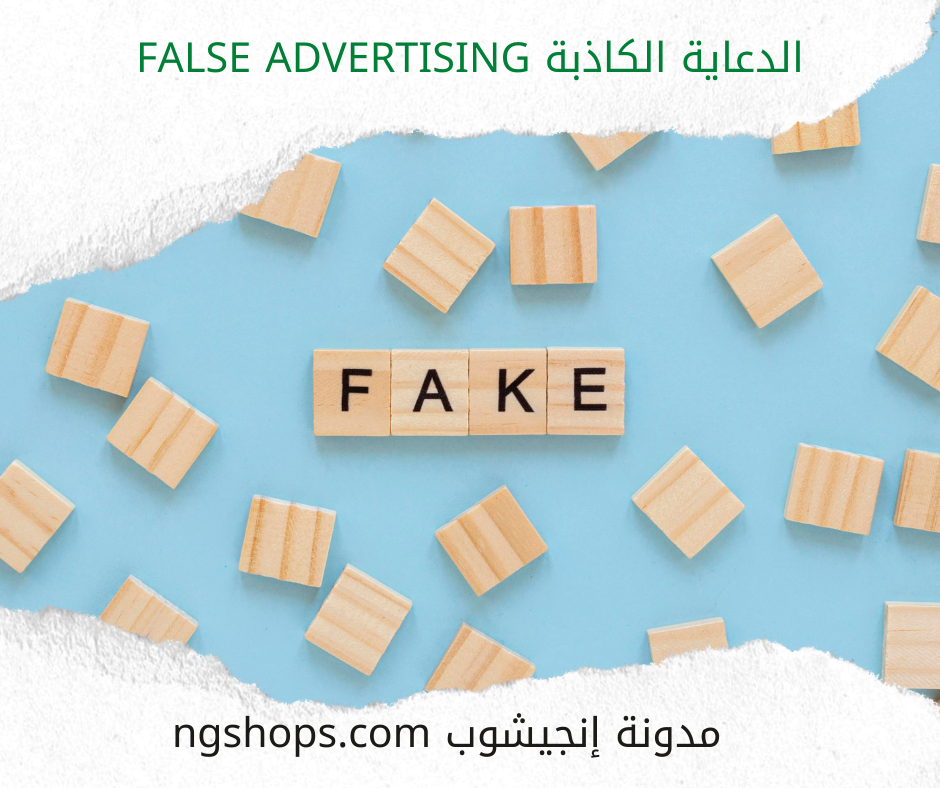False Advertising
Providing some incorrect data by companies is considered an illegal act, and this applies to the advertisements made by those companies, as well as any information that the marketing team may provide, and it also applies to the information and statements provided by the company, whether through the media or online, or even in Regarding their product packaging system, these claims or advertisements are misleading to the consumer, which may cause the company’s value and legal accountability to decrease at times.
Advertising And false advertising False Advertising
False advertising can be defined as incorrect information that is announced and presented to the consumer to encourage him to buy a product or service. It is considered misleading advertising intended to mislead the consumer and sell products that do not reflect the image that is advertised.
Methods of false advertising
There are many ways in which false or misleading advertising is carried out, and below we explain the most important methods and examples that have been reported by consumers.
- Attractive offers
Some companies offer offers and information in general to the public, without announcing other details of the product or the advertisement itself, which may conflict with the general image of the advertisement, meaning that the content provided by the advertisement contradicts the real product presented to the public. The general image of the advertisement must reflect its reality and not The information provided by the advertisement conflicts with the real information about the product, and if the general image contradicts what is contained within the offer, this is called misleading and falls under false advertising. An example of this is that a company offers a discount for all of the company’s products, yet consumers are surprised by the presence of non-branded products. Discount.
- Comparative advertising
Some marketing campaigns compare a group of products with others that are competitive with them, and these comparisons are related to price, quality, or other comparison factors, but the comparative advertisement may be characterized as false or misleading if this comparison is inaccurate and not conducted correctly.
- Advertisement bait
Bait advertising is an advertising method used by marketers to sell an advanced product to another producer. The original product is advertised at a low price, and when you buy it, they tell you that the product has sold out and there is another advanced product, but at a higher price.
- Environmental propaganda
There are a large number of marketing campaigns spread recently that support environmental protection, through the production of environmentally friendly goods that can be recycled, as the advertisement includes data on the impact of materials on animals and the environment in general, and that their products are completely safe for the environment, but beware, as there are many Companies that exploit these campaigns produce materials that are completely contrary to what is advertised.
- False pricing
This method includes the presence of additional fees on the original price of the product that are not announced, so that the consumer discovers upon payment that the final price is much higher than the announced price.
- False sizes and quantities
Another way in which marketing campaigns mislead consumers is to announce sizes and quantities of the advertised product, which is contrary to its original size and is smaller or larger than what is advertised. Some may also package the product in a way that makes it appear larger.
Therefore, false advertising falls under the category of illegal behavior, as companies must advertise the product in a correct and honest manner without using methods that raise suspicion and suspicion, so as not to fall under the penalty of the law, especially advertising that may harm consumers or competing companies.
Read also - What are the four types of ads?

